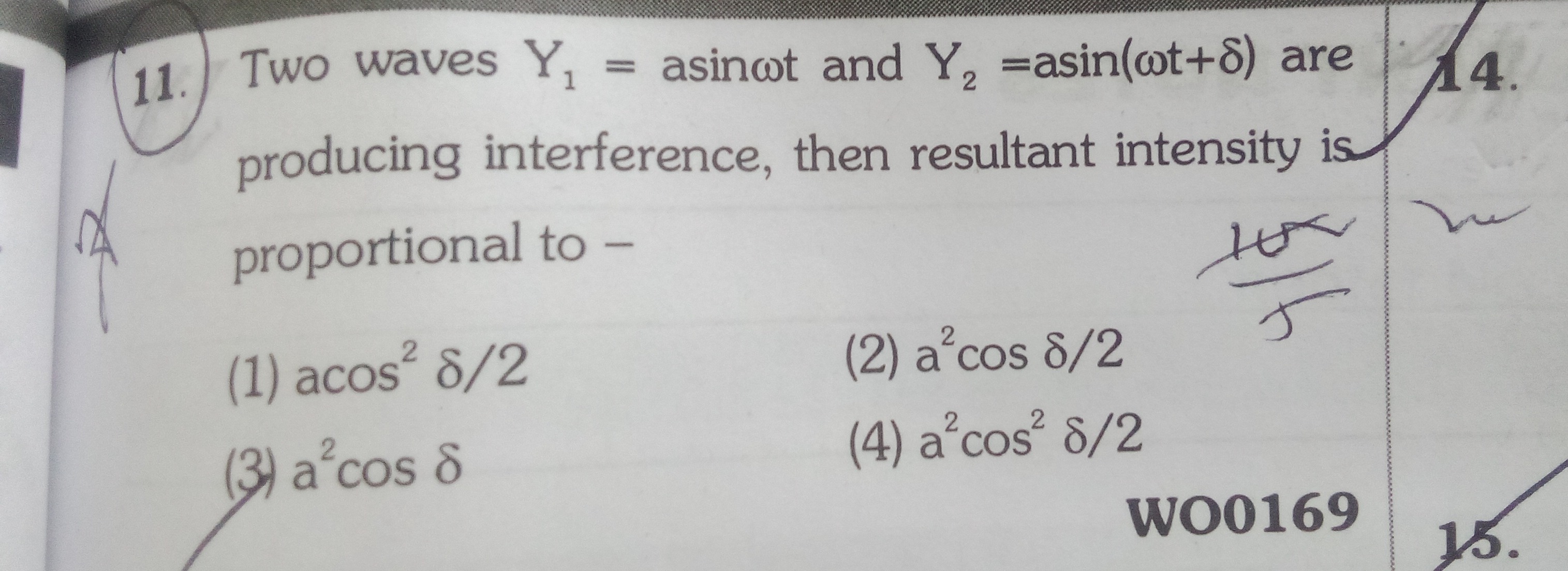Question
Question: Two waves $Y_1 = asin\omega t$ and $Y_2 =asin(\omega t+\delta)$ are producing interference, then res...
Two waves Y1=asinωt and Y2=asin(ωt+δ) are producing interference, then resultant intensity is proportional to -

acos2δ/2
a2cosδ/2
a2cosδ
a2cos2δ/2
a2cos2δ/2
Solution
The two waves are given by Y1=asin(ωt) and Y2=asin(ωt+δ). The resultant displacement Yres is the sum of the individual displacements: Yres=Y1+Y2=asin(ωt)+asin(ωt+δ) Using the trigonometric identity sinA+sinB=2sin(2A+B)cos(2A−B): Yres=a[2sin(2ωt+ωt+δ)cos(2ωt−(ωt+δ))] Yres=2asin(ωt+2δ)cos(−2δ) Since cos(−θ)=cos(θ): Yres=2acos(2δ)sin(ωt+2δ) The resultant amplitude Ares is the coefficient of the sine term: Ares=2acos(2δ) The intensity (I) of a wave is directly proportional to the square of its amplitude (A): I∝A2 Therefore, the resultant intensity Ires is proportional to the square of the resultant amplitude Ares: Ires∝Ares2 Ires∝(2acos(2δ))2 Ires∝4a2cos2(2δ) Thus, the resultant intensity is proportional to a2cos2(2δ).
